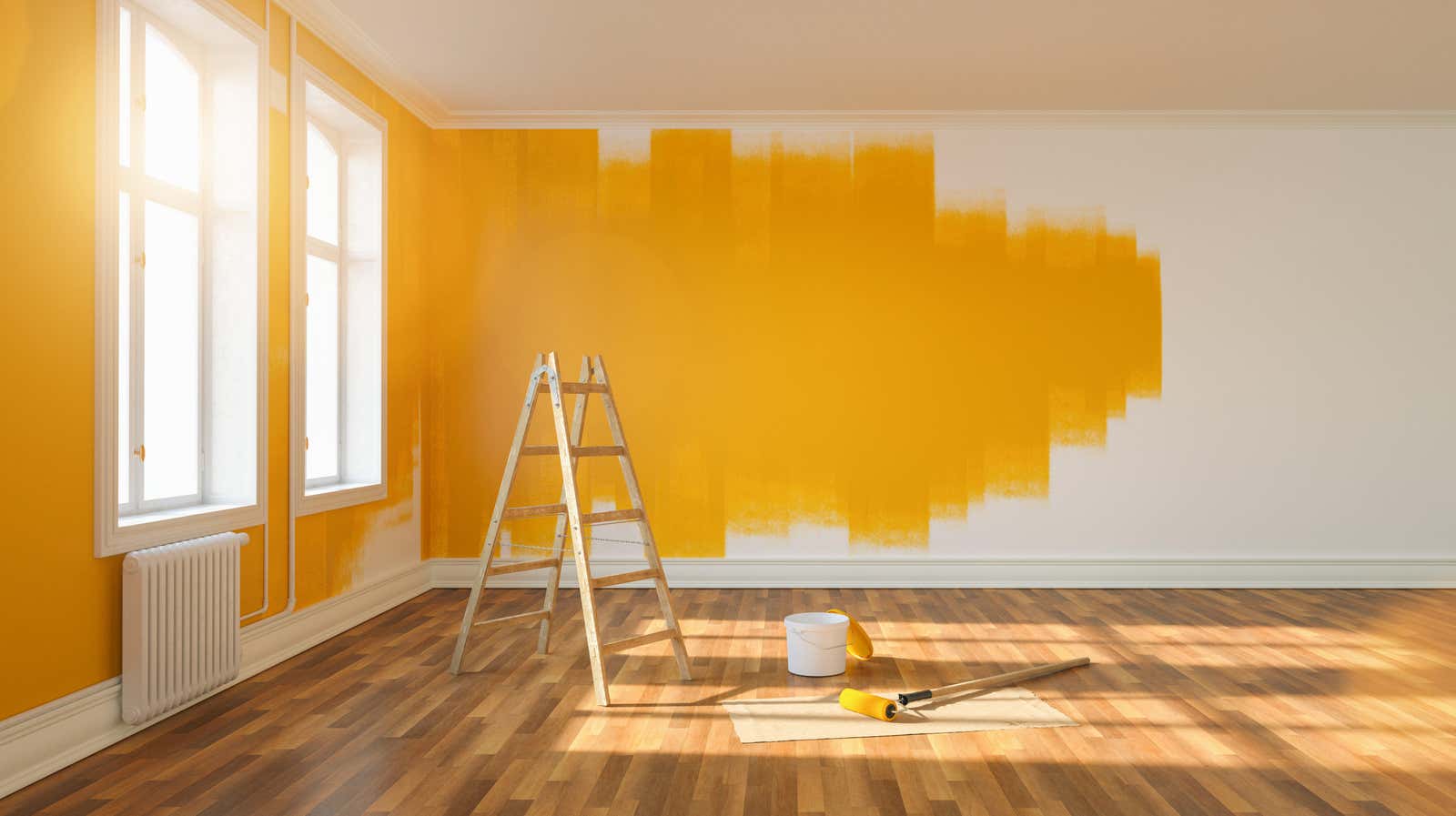You Can Really Use Paint to Make a Room Bigger or Smaller.

No house or apartment is perfect. Even if everything seems perfect when you first move in, your needs will change over time, and one day you may wake up and find that your bedroom, study, or living room looks too small, too large, or some other strange shape. Changing the physical characteristics of a space is usually a costly and time-consuming process. But you can change the perception of a space using a variety of visual techniques , and one of the cheapest and easiest of these is paint.
By simply choosing and painting your walls thoughtfully (based on some simple scientific principles), you can make a room bigger or smaller without physically changing anything.
It’s important to note that the effect of paint on our perception of a room is usually subtle – you can’t convince anyone that the office you’ve built into your closet is spacious by painting a bold accent wall . But this subtle effect can actually be quite powerful.
How Paint Color Can Affect Your Perception
There is a gentle debate about the effect paint color has on our perception of room size, but this is backed up by real science. When you look at a room, three main things happen:
- Color saturation. Color saturation is a measure of how bright or intense a color is. Highly saturated colors look bright and vibrant to your eye—pastel colors, for example, aren’t very saturated at all. Research has shown that the richer the color of an object, the larger it appears. Experiments have also shown that color saturation affects the perception of room size – for example, a piece of furniture with a very saturated color, for example, makes the ceiling appear lower. This also applies to wall color – rich wall colors can make a room look smaller.
- color progression. Color grabs our attention. The transition from light to dark draws the eye up or down, causing the space to appear larger or smaller. One study found that rooms painted in lighter colors appeared taller when people were asked to rate their ceiling height.
- The illusion of squareness. Research shows that people tend to overestimate the size of spaces when they are rectangular rather than square. By creating the illusion of squareness, you can trick the eye into making a square room seem larger than it actually is.
Again, we are talking about perception here, so your mileage may vary depending on how effective these tricks are. In addition to the color of the walls and ceilings, there are other factors: the light in the room will be an important factor, as well as the furniture and type of flooring.
How to paint a room to make it look bigger or smaller
So how can you apply color to a room to change its perceived shape and size? Here are five ways to transform a room with just a coat of paint:
- Expand a room: Because color saturation can make a room look smaller, lighter colors can have the opposite effect. Light colors close to white reflect and reflect more light, making the room appear brighter and therefore larger. White also “disappears” to the eye, making things like the opposite wall appear even further away. Also, using the same color throughout a room can enhance it by blurring edges – edges make a space more defined and therefore smaller. You can also use the illusion of squareness to make a room appear larger by painting the walls in a color that contrasts with the ceiling, making them appear longer.
- Make the room cozier: If you have a large room and want to feel more intimate and cozy, paint all the walls (and the ceiling) in a rich, saturated color that absorbs more light, visually “shrinking” the space and making it feel enclosed. If you choose a rich color that contrasts with the flooring, you will create edges that further define the space and make it appear smaller.
- Make the ceiling taller: Paint a low ceiling white if you want it to appear taller – it’s the same effect as on the walls. Using a glossy finish on your ceiling will increase the amount of light reflected, making it appear taller. You should carefully choose the color of the walls if you are trying to raise the ceiling – too dark and saturated a color will lower the ceiling, but a bit of contrast will help create the illusion.
- Make the room smaller: If your room looks like a bowling alley, paint the shortest walls a darker color to make them appear closer. This will reduce the perceived squareness of the space, making it appear smaller. Paint the ceiling the same color for an even stronger effect.
- Expand the room: You can also divide the walls into an upper and lower wall by painting the ceiling and lower “strip” of walls a light color and the middle strip a darker one. This sandwich effect creates the illusion of a wider room, as the darker stripe will appear larger and the lighter stripes will appear smaller.
None of this is magic, and painting your room a certain way won’t make your big sofa fit in there. But if you feel like the walls are closing in as you sit in your tiny living room watching TV, or if you feel like you don’t have enough furniture to anchor your amazingly huge master bedroom, a splash of paint can have a real effect. visual impact.